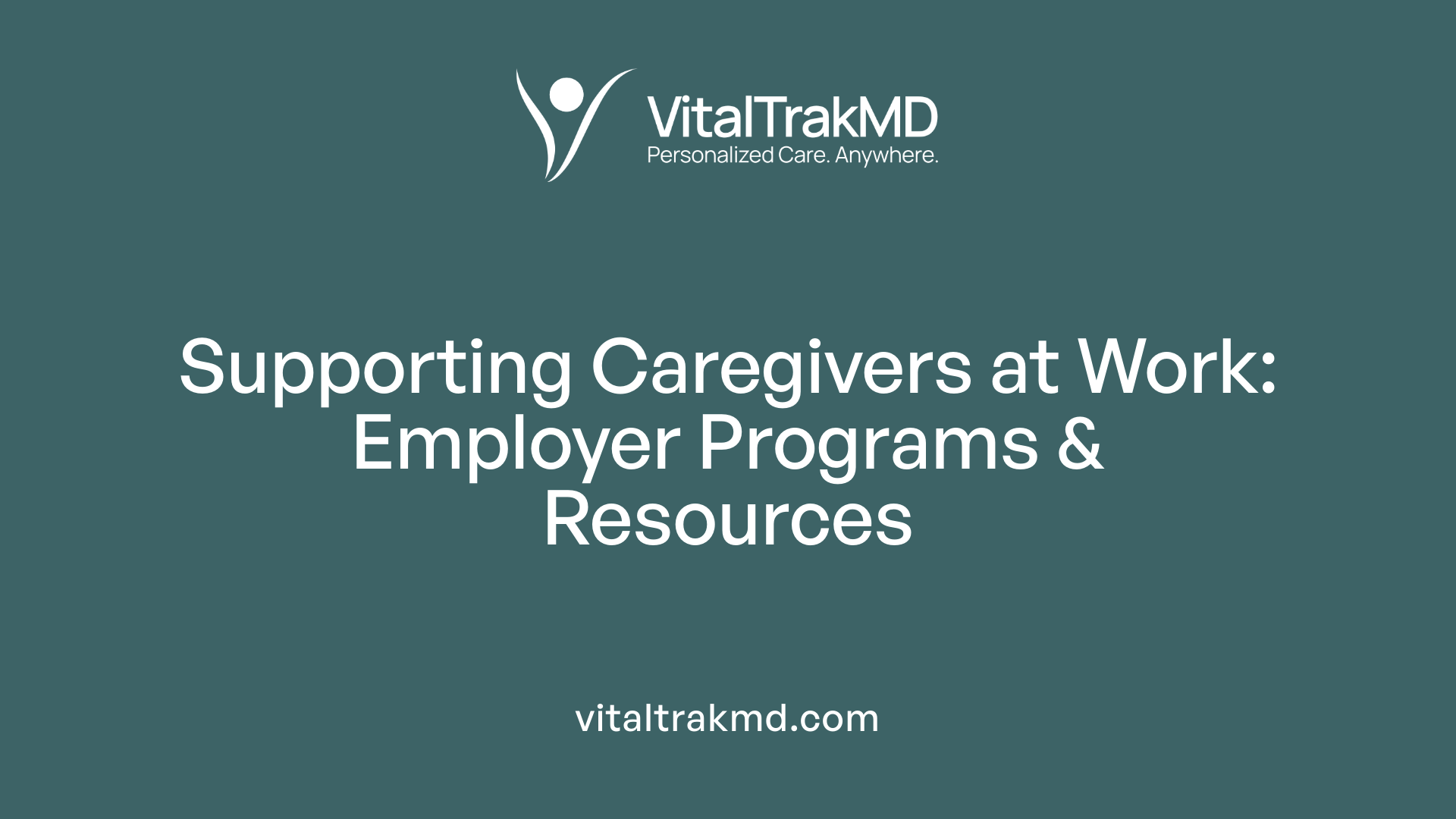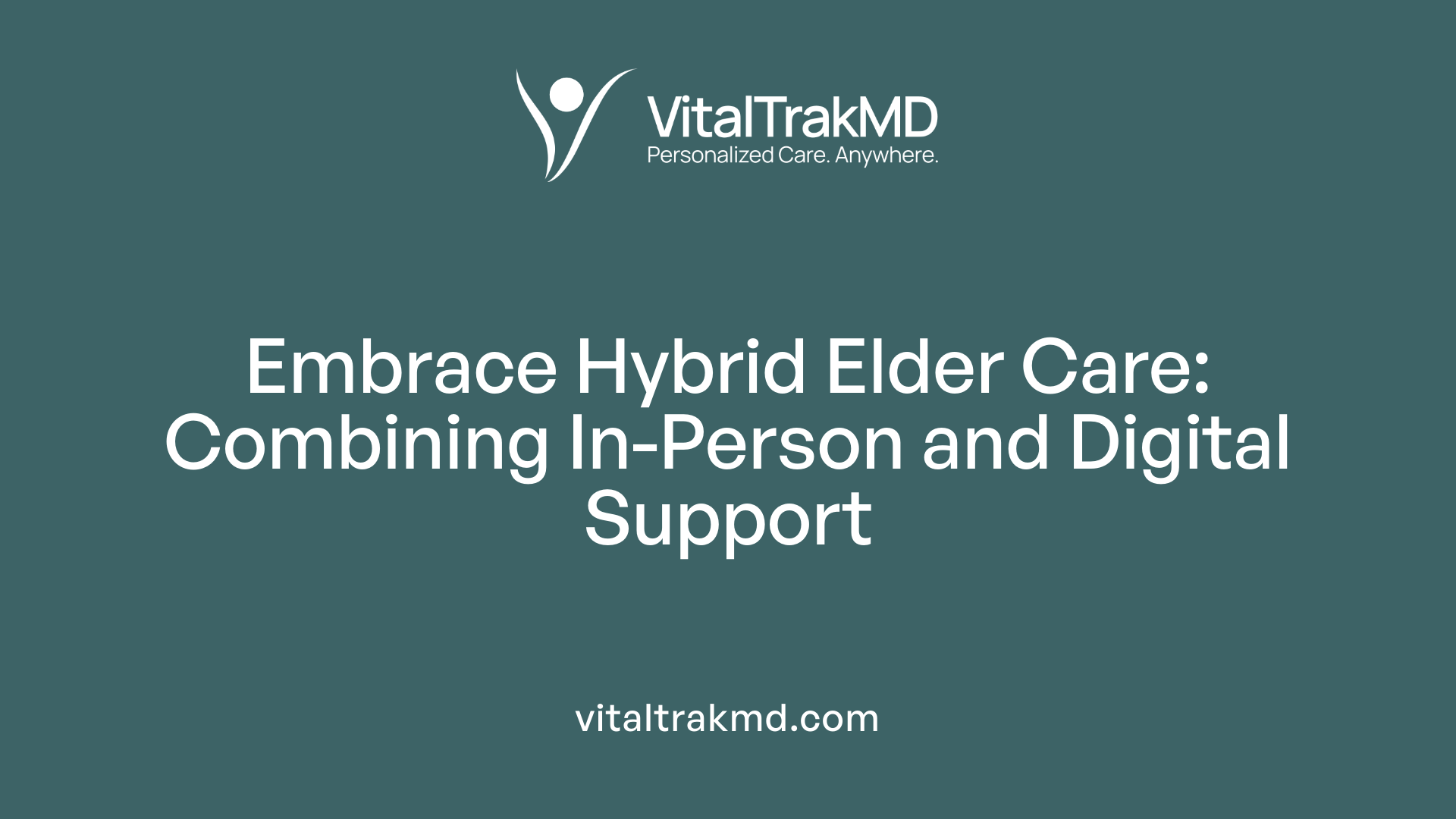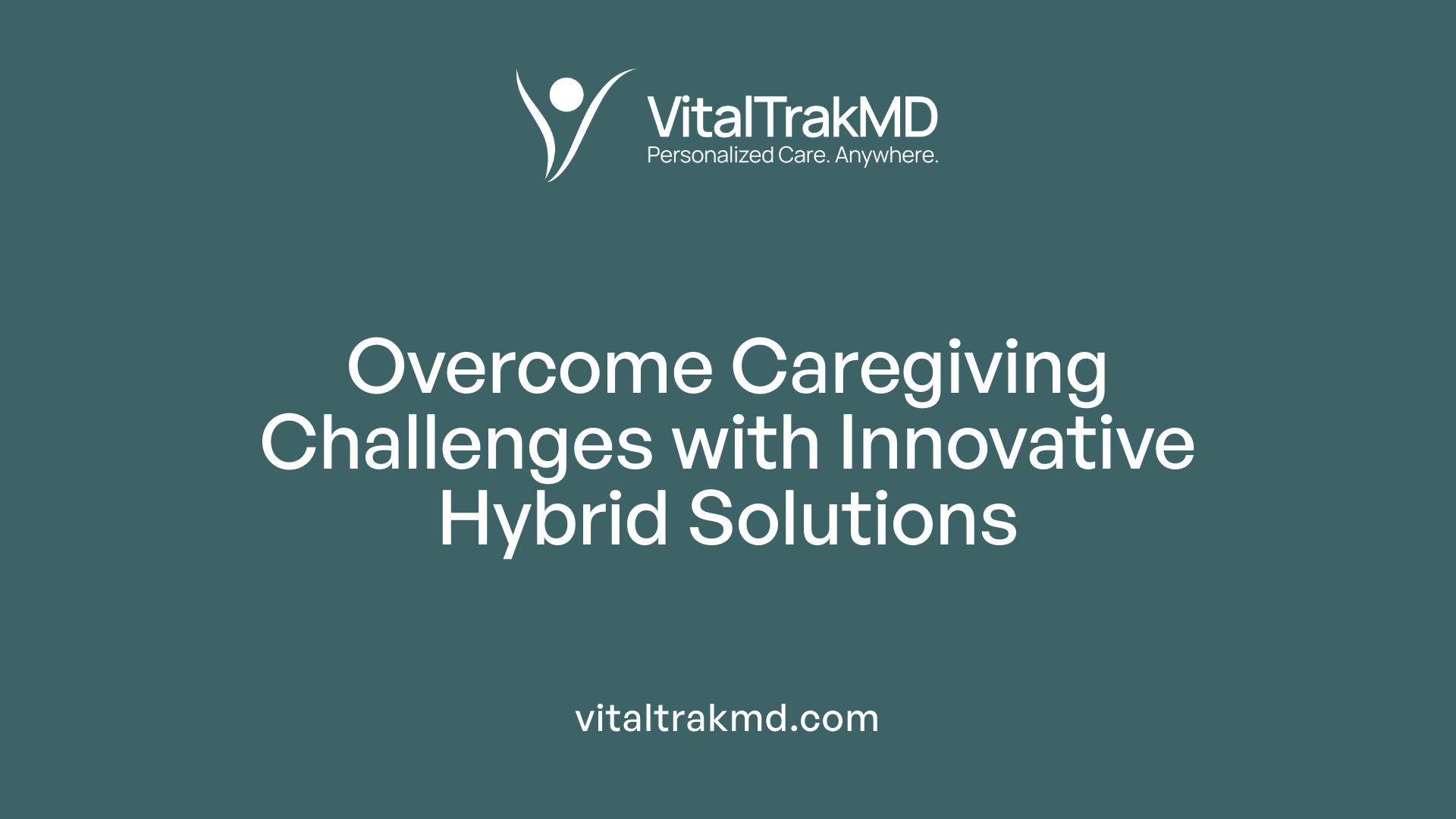How Hybrid Care Supports Busy Professionals Managing Aging Parents

Understanding the Shift Towards Hybrid Care for Elderly Support and Caregiver Well-Being
As the demographic landscape shifts towards an aging population, busy professionals tasked with caring for aging parents face mounting challenges in balancing work and family responsibilities. Hybrid care models have emerged as a vital strategy in providing flexible, accessible, and comprehensive support tailored to modern caregiving needs. This article explores how hybrid care benefits caregivers, the technological and organizational frameworks that facilitate this approach, and practical steps for implementing these solutions effectively.
The Role of Hybrid Work in Supporting Caregivers
What are the benefits of hybrid care approaches for caregivers?
Hybrid work models play a crucial role in helping family caregivers better manage their responsibilities. One major advantage is the increased flexibility to coordinate healthcare needs for their loved ones. By combining telehealth options with in-person visits, caregivers can access medical services more conveniently, especially when dealing with transportation challenges or living far from healthcare facilities.
This approach enhances timely medical attention, reduces waiting times, and allows for easier scheduling of routine check-ups or emergency consultations. Virtual platforms enable caregivers to monitor the health status of their loved ones remotely, which helps in early detection of issues and prompt interventions.
Besides improving healthcare access, hybrid models help alleviate caregiver stress. They facilitate remote communication with healthcare professionals, mental health support, and family involvement without the need for physical travel. This personalized and adaptable method ensures that caregivers can provide efficient care while maintaining their own well-being.
Overall, hybrid care models foster a more balanced, accessible, and less burdensome caregiving experience. They empower caregivers to deliver better care, promote health and safety for their loved ones, and help sustain their caregiving roles in the long term.
Employer Support Programs for Caregivers

What employer-supported programs and resources are available for working caregivers?
Employers are increasingly recognizing the importance of supporting employees with caregiving responsibilities. A variety of programs and resources are designed to help caregivers balance work and personal duties more effectively.
Flexible work policies are among the most common forms of support. These include telecommuting options, flextime arrangements, compressed workweeks, and hybrid schedules. Such options allow employees to organize their work around caregiving activities like medical appointments or emotional support, reducing stress and boosting productivity.
In addition to flexible scheduling, many organizations offer specific caregiver support programs. These might include training courses, on-demand workshops, and educational seminars. Employee Assistance Programs (EAPs) are also significant; they provide confidential counseling services, legal and financial advice, and resources related to eldercare and childcare.
Workplaces are encouraged to use toolkits, guides, and establish Employee Resource Groups (ERGs) focused on caregiving. These groups can promote awareness, share best practices, and create community support. Initiatives such as caregiver-focused surveys, lunch and learn sessions, and dedicated policies aim to foster a supportive environment.
Overall, these employer-supported programs and resources help improve employee well-being, reduce burnout, and increase retention by acknowledging and accommodating the unique challenges of caregiving.
Integrating Technology in Elder Care

What is the role of remote and in-person hybrid support in eldercare management?
Hybrid eldercare models combine the best of both in-person and remote assistance, offering a flexible and comprehensive approach to caring for older adults. In-person support is essential for providing direct physical care, conducting thorough health assessments, and managing emergencies that require hands-on intervention.
Remote support complements these services by enabling continuous monitoring and virtual engagement. Technologies such as telehealth platforms allow seniors to consult with healthcare providers from the safety and comfort of their homes, reducing the need for frequent hospital visits.
Secure integration of digital tools is crucial in these models. Devices like remote monitoring sensors track vital signs and detect falls, while electronic health records ensure care teams have real-time access to up-to-date information. Virtual communication platforms also foster ongoing contact between seniors and their families or caregivers.
This combined approach helps optimize healthcare resources, lowers costs, and supports aging in place efforts. It offers seniors increased independence and companionship, improves health outcomes, and allows caregivers to respond promptly to changing needs. As eldercare becomes more technology-enabled, collaboration between traditional care and digital solutions will be vital for effective, person-centered support.
Addressing Caregiving Challenges with Hybrid Solutions

How can caregiving challenges be addressed through hybrid care approaches?
Hybrid care models offer a promising solution to the complex challenges faced by caregivers. By blending various support modalities—such as online platforms, peer-led groups, skills-building workshops, and in-person support—these approaches create a flexible, comprehensive support system.
One of the main advantages of hybrid models is their scalability. They can be adapted to different community sizes and resource availability, making them suitable for urban centers and rural areas alike. In rural regions, where access to healthcare and social services can be limited, hybrid models help bridge gaps by providing remote access to resources and peer support networks.
Accessibility is further enhanced through the use of technology, which allows caregivers to participate in support activities from their homes or local community centers. This flexibility reduces the burden of travel and time constraints, making ongoing support more feasible.
To ensure these programs effectively promote behavioral change, various frameworks like Self-Efficacy Theory and the Resiliency, Education, and Peer support (REP) model are applied. These theories help tailor interventions to boost caregiver confidence, improve their skills, and foster social connections. For example, by increasing caregivers' self-efficacy through targeted training and support, they are more likely to manage stress, respond to emergencies, and maintain their own well-being.
Coordination among healthcare providers, community organizations, and caregivers is integral to hybrid approaches. Technology facilitates this collaboration by enabling real-time communication, remote monitoring, and resource sharing.
Overall, hybrid caregiving strategies promote a resilient, well-supported caregiving community. They reduce stress and burden, enhance safety through better self-management, and sustain caregiver well-being by leveraging technology and local resources. As caregiving needs grow, especially with an aging population, implementing such scalable and accessible models becomes increasingly vital.
Frameworks and Methods in Hybrid Care Models

What frameworks and methods are used in hybrid caregiving models?
Hybrid caregiving models combine different types of support to provide comprehensive and flexible care. These models typically use a mix of synchronous interventions—such as face-to-face visits, telehealth sessions, or live video chats—and asynchronous digital tools like symptom-monitoring apps, chatbots, and virtual assistance. By integrating these approaches, caregivers can tailor support to meet individual needs more effectively.
Digital interventions are designed to target specific clinical goals, such as managing mental health conditions like anxiety, depression, mood disorders, or serious mental illnesses. These tools help in tracking symptoms, providing psychoeducation, or delivering therapeutic exercises remotely. Human support roles play a crucial part in this system, with clinicians, digital navigators, or caregivers guiding patients through digital tools, reviewing data collected by these tools, and engaging with patients for motivation and reassurance.
The frameworks underlying hybrid models emphasize three main components:
| Component | Description | Examples |
|---|---|---|
| Digital Interventions | Technology-based solutions tailored to clinical targets | Symptom monitoring apps, online therapy modules, virtual reality experiences |
| Human Support Roles | Professionals or trained individuals assisting with and overseeing digital engagement | Clinicians providing consultation, digital navigators guiding app use |
| Patient Populations | Specific groups served by the model based on needs | Mood disorder patients, anxiety sufferers, individuals with serious mental health conditions |
The adaptation of these frameworks depends on factors such as the complexity of clinical needs, patient preferences, and technological access. The goal is to harmonize digital innovations with human interaction, delivering care that is accessible, personalized, and effective.
In sum, hybrid care frameworks aim to enhance mental health treatment by blending digital tools with human expertise, creating a flexible system that can be customized for diverse patient groups. This integrated approach not only improves clinical outcomes but also increases patient engagement and satisfaction.
The Impact of Hybrid Care on Work-Life Balance

How does hybrid care impact work-life balance for caregivers?
Hybrid care, which combines remote and in-person support, offers significant benefits for caregivers striving to balance their professional and personal responsibilities. This model provides greater scheduling flexibility, allowing caregivers to better manage appointments, medication updates, and emotional support tasks for their loved ones.
One of the primary advantages of hybrid care is the extra time it creates by reducing the need for long commutes. Caregivers can utilize these saved hours for family activities, self-care, or rest, which many report as essential for their well-being.
Flexible work arrangements, like adjustable hours and the option for remote work, help decrease the conflict between work duties and caregiving responsibilities. According to research, a large number of caregivers benefit from such flexibility, which helps reduce stress and improve mental health.
Workplace policies tailored for caregivers — including flexible schedules, paid family leave, and support resources — further empower employees to meet both work and family obligations without sacrificing one for the other.
Overall, hybrid care creates a supportive environment that nurtures better time management and work-life harmony. It enables caregivers to stay engaged at work while actively participating in their loved ones’ care, paving the way for sustained employment and improved quality of life.
Practical Guidance for Hybrid Care Implementation
Implementing hybrid care solutions requires a strategic approach that seamlessly integrates both telehealth and face-to-face services. Healthcare organizations should start by developing a clear plan that aligns clinical workflows across different modalities, ensuring continuity and consistency in patient care.
One crucial step is establishing protocols for transitioning between in-person and virtual consultations. This includes optimizing scheduling processes to accommodate patient needs and allocating dedicated spaces for virtual interactions that maintain privacy and professionalism.
Technology infrastructure plays a vital role in successful hybrid models. Investing in secure, interoperable systems that protect patient data and enable smooth communication is essential. Regularly monitoring patient outcomes and satisfaction through surveys and data analysis helps identify areas for improvement.
Staff training and stakeholder engagement are also fundamental. Equipping healthcare providers with the skills to manage both in-person and virtual care supports a positive organizational culture. Involving staff and patients early in the planning process helps address potential barriers, including issues like digital disparities.
Learning from established programs such as NHS Dorset’s D@SH or Scotland’s TEC can offer valuable insights. These models demonstrate best practices in operational scalability and effective implementation, guiding organizations toward sustainable and patient-centered hybrid care solutions.
Empowering Caregivers through Innovation and Support
Hybrid care models represent a transformative shift in eldercare and caregiving support, especially for busy professionals managing aging parents. By blending in-person and remote services, these models address the unique challenges faced by caregivers, offering flexibility, improved access, and emotional relief. Employer support programs, technological tools, and strategic organizational policies are crucial in fostering a sustainable caregiving environment. As society continues to adapt to demographic shifts, embracing hybrid care approaches will be essential in enabling aging in place, reducing caregiver burden, and promoting resilience among working families. Empowered by innovation, caregivers are better equipped to navigate their dual roles effectively, ensuring the well-being of their loved ones without compromising their professional pursuits.
References
- How Do Hybrid Work Models Support Family Caregivers of Seniors?
- Working while caretaking: why hybrid-remote work is a great way to ...
- 5 Ways to Support Employees in the Sandwich Generation ...
- 4 ways employers can help support employees caring for aging ...
- Family Caregiving for Older Adults - PMC - PubMed Central
- Building Trust in Elder Care: How to Ensure a Positive Experience ...
- How Can Innovative Technology Help Long-Distance Caregivers ...
Recent articles
Want to Feel Better and Live Healthier?
Join hundreds of patients taking control of their health with personalized care that fits their life – not the other way around.
Rated 4.8/5 by 32+ customers







